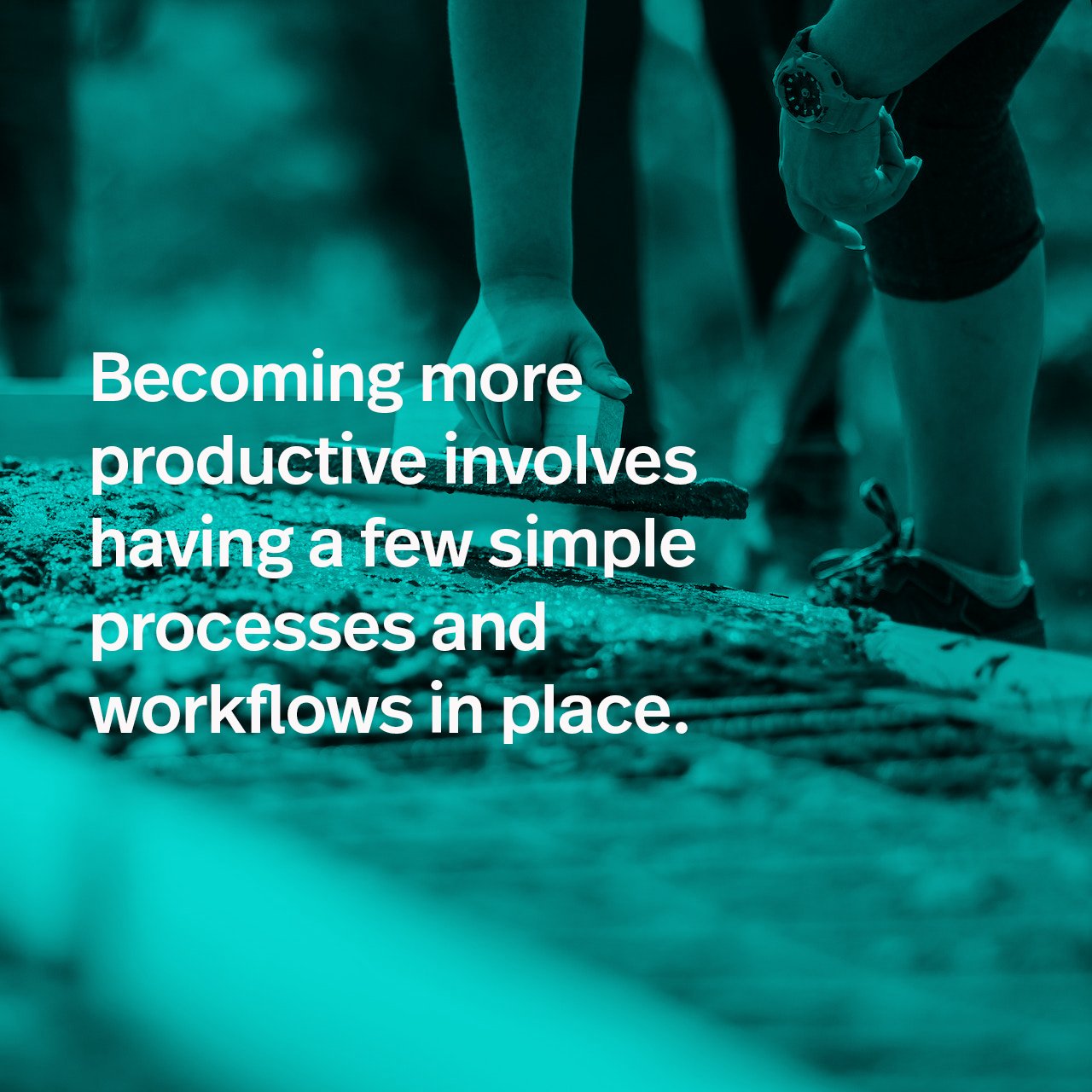Productivity 101: Building A Solid Foundation.
If you have ever gone looking around for a productivity system, the chances are you will have ended up with a long list of confusing methods and techniques that likely would have put you off going any further.
The good news is you do not need to go down a long rabbit hole because all good, robust productivity and time management systems have a simple foundation that is easy to understand and implement.
All you need are three core elements: Collect stuff, organise what you collected and then do the work (COD). Below, I will go into more detail on what these three mean when building your own system.
Collect.
If you are not collecting and writing down your commitments, appointments, todos and anything else of interest, your system will never get off the ground. So, the first step to building your productivity system is to create a process for collecting everything.
This means you need a UCT (Universal Collection Tool). The best tool for this is something you carry around with you everywhere you go: Your phone.
You can use your phone’s built-in notes or task management app to collect stuff. You can type, dictate, send articles, and so much more directly from your phone to an inbox where you can then manage everything.
The only caveat here is to choose one place to collect everything — what is called your “inbox”. If you have multiple inboxes scattered everywhere, you will create a lot of extra work for yourself. Avoid this at all costs.
NB: There is an exception here. If your employer has stringent security rules, it is better to operate with two inboxes. One for your work and for your personal life.
Collecting Resources.
Quickly Collect Ideas With Apple Notes Trick.
Organise.
Okay, so you have collected a lot of ideas, todos and commitments; what do you do with them?
The easiest ones to deal with are your events and commitments. If you have not done so already, these can be placed on your calendar on the appropriate day. Your Todos should be placed in some kind of task manager. Again, you can use the free resources your phone comes with. For example, Apple’s Reminders is an excellent all-round task manager, as is Google Tasks.
If you want to go a little more specialised, you can get an app like Todoist, a purpose-built task manager that is easy to learn and will grow with you as you build your system.
For your ideas and items to read, you can use a notes app. When choosing a notes app, you want to be careful and choose the simplest one you are comfortable using. Apps like Notion, Evernote and Obsidian have a steep learning curve. Apple Notes and Google Keep are much easier to use (and are free).
If you are in the Apple ecosystem, Safari, Apple’s built-in browser, has a Reading List feature. You can save articles and other sites of interest here for later reading.
Organise Resources.
How To Organise Your Digital Notes
How To Organise Your Projects and Tasks
Do.
Ultimately, having a robust productivity system is all about doing the work. However, if you are not collecting and organising what you collect into its appropriate place, doing your work is less efficient because you will be wasting a lot of time trying to find or remember what needs to be done.
Your task manager will tell you what needs to be done, your notes will contain your ideas about how to get your work done, and your calendar will tell you where you need to be and when.
The goal is to spend 95% of your day doing what needs to be done. That includes your work and your personal commitments. A robust productivity system is not all about doing your work; it’s about living your life with as little stress as possible. When you know what needs to be done, you will find yourself less overwhelmed, which frees you up to do a lot more of the things you want to do.
Do Resources
Take the FREE Collect Organise Do course
The Work Won’t Do Itself, And That’s How It Should Be.
The Secret To Getting Things Done.
Ultimately, becoming more productive involves having a few systems, processes and workflows in place. The simpler you keep things, the better, as you want to be spending less time organising and more time doing. The more time you spend time doing, the more time you will have for relaxing, hobbies and spending time with the people you want to spend time with.
Thank you for reading my stories! 😊
If you would like to receive all the productivity and time management content I create each week in one convenient email, you can subscribe to my weekly newsletter here.
You can also learn more about what I do here on my website
Finally, don’t forget to say hello on Twitter / X, YouTube or Facebook

